Forces on charged particles
Static Electricity
When a plastic ruler is rubbed by a cloth it can attract small pieces of paper. This experiment is an example of an electric field causing the movement of elecric charge. In order to overcome the force of gravity on the paper, an electrostatic force of attraction between the ruler and the bits of paper with their opposite charges must have taken place. This demonstrates that there is a force operating on charges. We also know that like charges repel each other and unlike charges attract.
Electric Fields
A field is defined as a region of space where the effects of a non-contact force can be detected. The simplest electric field is from a point charge. Below are the diagrams associated with both types of point charges. Note that the field lines point away from the positive charge and towards the negative charge.
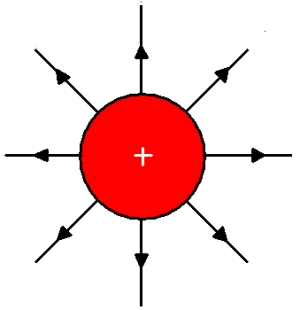
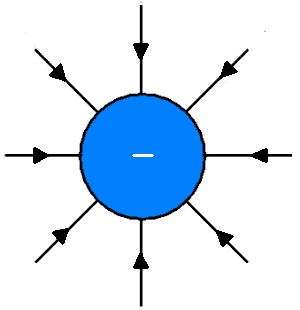
An electric field between two parallel plates is a uniform field and this is represented in the diagram below.
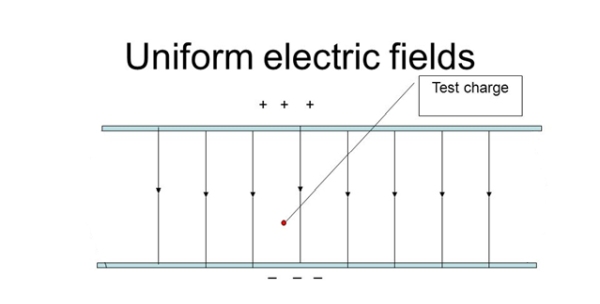
Electric fields are invisible, and we represent them with arrows. Where the arrows are close together, this represents a strong electric field. Where the arrows are further apart this represents a weak electric field. Where the lines are equally spaced this represents a uniform electric field.
One of the rules about field lines is that they never cross one another. When drawing diagrams with more than one charge it is important to remember this rule.
Two opposite point charges and their field lines
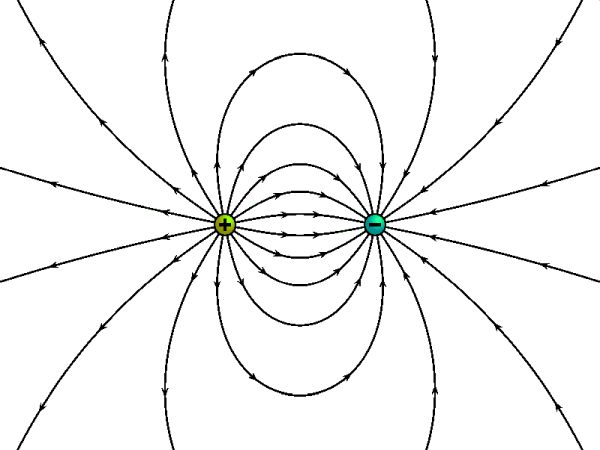
Notice that the field lines point away from the positive and towards the negative charges. It is clear from the diagram that the size of the charges are similar, if not the same. If the charges are not the same size the directions of the arrows will be the same, but the symmetry of the field lines will change.
Two point charges with the same charge
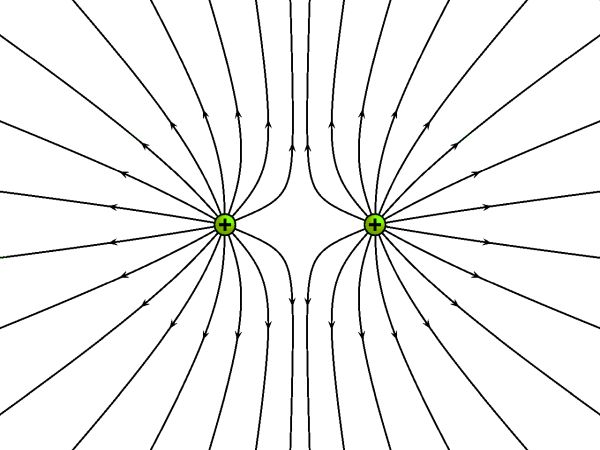
As you can see the field lines still point away from the positive charges. They show that the charges are repelling each other and that there is a minimum field between them.
Potential Difference
Many studying physics use the term voltage when they are referring to the potential difference (pd) in a circuit. The potential difference provided by the battery or powerpack is supplying energy to the circuit. Potential difference deals with the amount of energy electrons are carrying. The current is the number of electrons passing a point per unit time. The energy from the potential difference gets used up by the things in the circuit but the electrons are not used up. This is why the current remains the same at all points in a series circuit, but the voltage is used up by the components of the circuit.
One volt of potential difference is the same as giving one Joule of energy to one Coulomb of charge. Two volts would be giving 2 Joules of energy to 1 Coulomb of charge.
The relationship between potential difference, energy and charge is given by the following relationship:
One volt can also be described as the electric potential between two points of a conducting wire when an electric current of one amp dissipates one watt of power between those points.